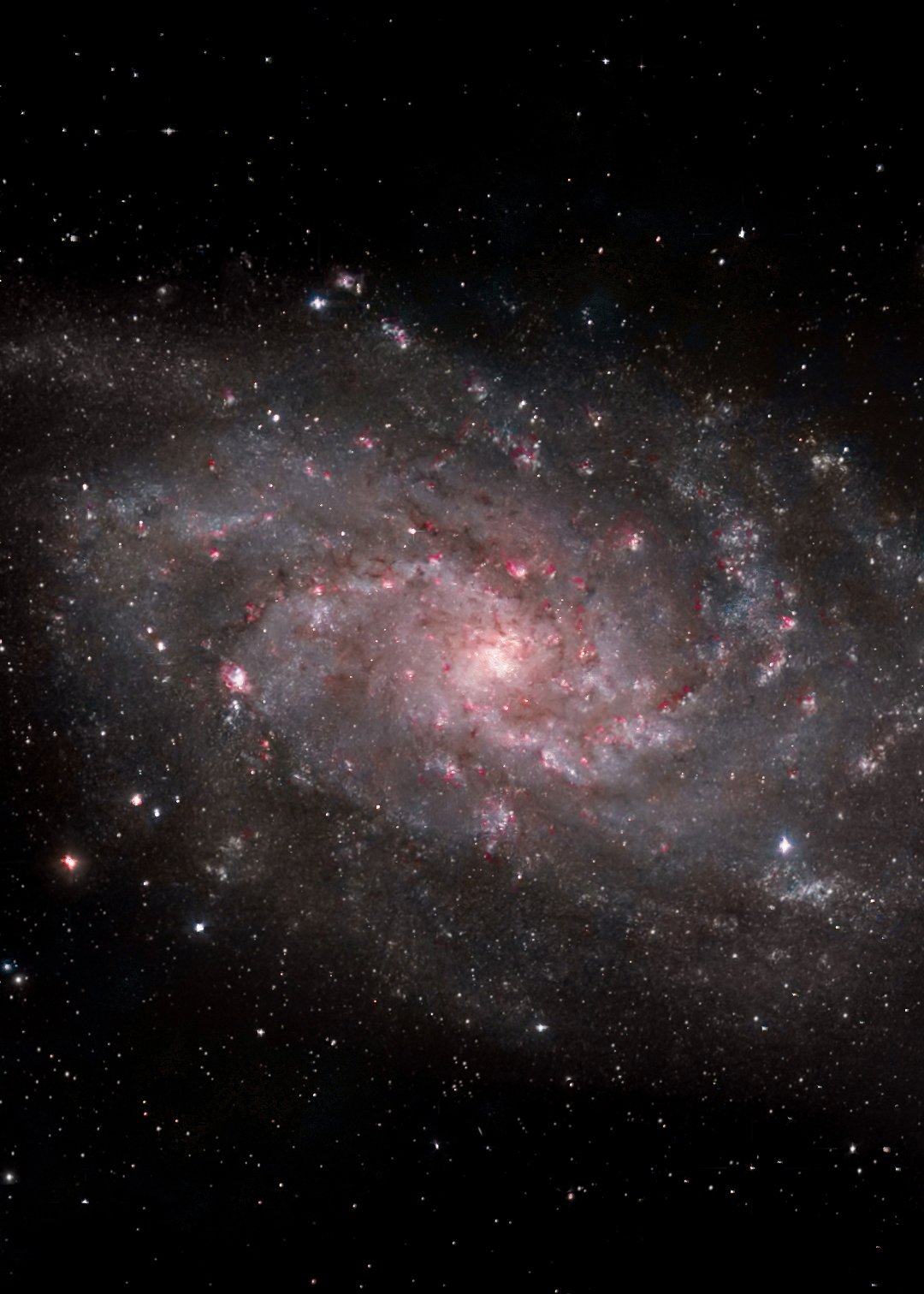
"Who are we? We find that we live on an insignificant planet of a humdrum star lost in a galaxy tucked away in some forgotten corner of a universe in which there are far more galaxies than people." Carl Sagan

M81 Bodes Galaxy lower left and M82 Cigar galaxy upper right

M16 Eagle Nebula containing the pillar's of creation

Orion Nebula

M51 A and b a Grand Design Galaxy 400 billion stars

SH2-54 and The Scary Face Nebula

Andromeda Galaxy

11 galaxies Deerlick Group and Stephan's Quintet

dumbell Nebula

M33 one of our closest galaxies with 40 billion stars

Hoags Object 600 Million Light years Away

Andromeda Galaxy In BW

Cygnus Loop a Supernova Remnant

Comet Tsuchinshan-ATLAS

Silver Silver Galaxy and Others

Eagle Nebula Black and white

Helix Nebula

Messier 74 (Phantom Galaxy)

The Fornax Cluster is a cluster of galaxies lying at a distance of 19 megaparsecs (62 million light-years)

The Antennae Galaxies NGC 4038/NGC 4039 are a pair of interacting galaxies in the constellation Corvus. They are currently going through a starburst phase, in which the collision of clouds of gas and dust, with entangled magnetic fields, causes rapid star formation.

Jupiter and 3 of her Moons

Sculptor Galaxy Also known as the Silver Coin Galaxy, Silver Dollar Galaxy, NGC 253, or Caldwell 65

Horse Head Nebula and Fire Nebula

The Crab Nebula Behold the remnants of an ancient supernova! The Crab Nebula is a stunning, ever-expanding cloud of gas and dust, surrounding one of the densest objects in the universe: a neutron star.

Thor's Helmet an emission nebula

M13 hercules Globular cluster located about 25,000 light-years away in the constellation Hercules, this cluster contains over 300,000 stars

Hidden Galaxy IC342

Pillars of Creation

NGC 7380, also known as the Wizard Nebula

Markarian's Chain is a stretch of galaxies that forms part of the Virgo Cluster. When viewed from Earth, the galaxies lie along a smoothly curved line.

Messier 109 (also known as NGC 3992 or the Vacuum Cleaner Galaxy

2024 Solar Eclipse

Christmas Tree Cluster NGC 2264

The Rosette Nebula (Caldwell 49) is a stunning H II region nestled in a massive molecular cloud in the Monoceros part of our Milky Way!

Lunar Eclipse
The 2025 lunar eclipse marks another chapter in a long history of lunar eclipses that have intrigued cultures for millennia. Ancient civilizations often viewed these celestial events with a mixture of reverence and fear, interpreting them as omens or signs from the gods. For example, the Babylonians meticulously recorded lunar eclipses, using them to develop early astronomical models and calendars. Similarly, in many Indigenous cultures, blood moons were seen as significant spiritual events, often incorporated into mythologies and art that reflected their understanding of the cosmos.
The phenomenon of a "blood moon," where the eclipsed Moon takes on a reddish hue, has consistently inspired artists throughout history. From ancient pottery depicting celestial events to modern paintings and photography, artists have interpreted and captured these occurrences, emphasizing humanity's connection to the universe.
In the realm of science, the study of lunar eclipses has advanced our understanding of celestial mechanics, including the dynamics of the Earth-Moon-Sun relationship. Early astronomers like Galileo used lunar eclipses to challenge geocentric models of the universe, paving the way for the Copernican revolution.
Today, the 2025 lunar eclipse continues to serve as a meeting point of art and science. It encourages artists to explore new creative expressions inspired by the stunning visuals, while scientists use the event to engage the public with the wonders of astronomy. This intersection not only enriches our understanding of natural phenomena but also fosters a sense of wonder and curiosity that resonates across cultures and generations.